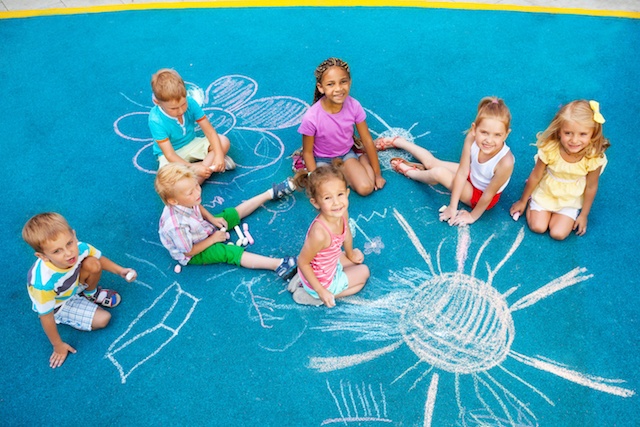Summer Sensory Play Ideas for Children of All Types of Sensory Profiles

Sensory integration, or the way in which the mind communicates with the senses, begins developing before birth and shapes the way that a person interacts with the environment. Children with over-responsive sensory profiles or sensory processing disorder can struggle in environments that are too stimulating for them, like the child who is stressed by noisy surroundings. Under-responsive sensory profiles, meanwhile, can present with a child who can’t sit still because his body needs to be active in order to transmit signals to his brain.
A child’s sensory profile is influenced by new sensory input the child encounters. Parents can use holiday time away from school to help their kids’ neurological growth, as well as appeal to their sensory inclinations, by exposing them to summer sensory activities.
Gross Motor Movement Activities
Vestibular (balance) and proprioceptive (body position awareness) are two senses that impact a child’s gross motor activity. The sensory seekers (whose nervous systems are under-responsive) are continuously on the go and will thrive in sports, whether it be on a team or solo.
Vestibular seekers will love activities that involve jumping and running, or any quick directional changes. Proprioceptive seekers can try activities such as gymnastics, in which positional awareness is put to the test.
If the child in question is defensive (or over-responsive), activities with less sudden movement, such as baseball, yoga or entry-level hiking might be a better choice.
Fine Motor Activities for Sensory Integration
Tactile and visual senses can be stimulated by fine motor sensory play in the summer. Tactile-seeking kids will love sidewalk chalk as well as activities involving water, finger paint and soap bubbles, while their visual-seeking peers will revel in the challenge of tracking and popping bubbles. Tactile-defensive children can be offered a paint brush to use instead of their fingers, or slowly introduced to touching paint with the suggestion of using one finger only.
Summer parenting tips often include recommendations of eye protection such as sunglasses, which suits the visually defensive child and, along with a sunhat, enables her to participate in more activities outdoors.
Incorporating Smells and Sounds Into Sensory Play
Summer fairs and carnivals are teeming with all the fragrance and noise that a sensory seeking child could want. Play dates held in groups have an energetic volume level, and barbecues, campfires and baking activities are aromatic opportunities for the sensory-seeking child to be a parent helper. The defensive child, on the other hand, will likely prefer one-on-one play dates or a quiet walk in the park where the environment is more calming.
Summer sensory play activities can incorporate some or all of the senses. Understanding the sensory profile of each child enables parents to plan and predict which activities their children will benefit from and enjoy.
If your child struggles with processing sensory input or is already considered to have a processing disorder, contact us online or find a center near you to learn more about how the Brain Balance Program can help.
Enjoy These Related Articles
Hypersensitivities in Children: Is it Sensory Processing Disorder?
Proprioception Explained
Kid-Friendly Exercises to Promote Brain Balance